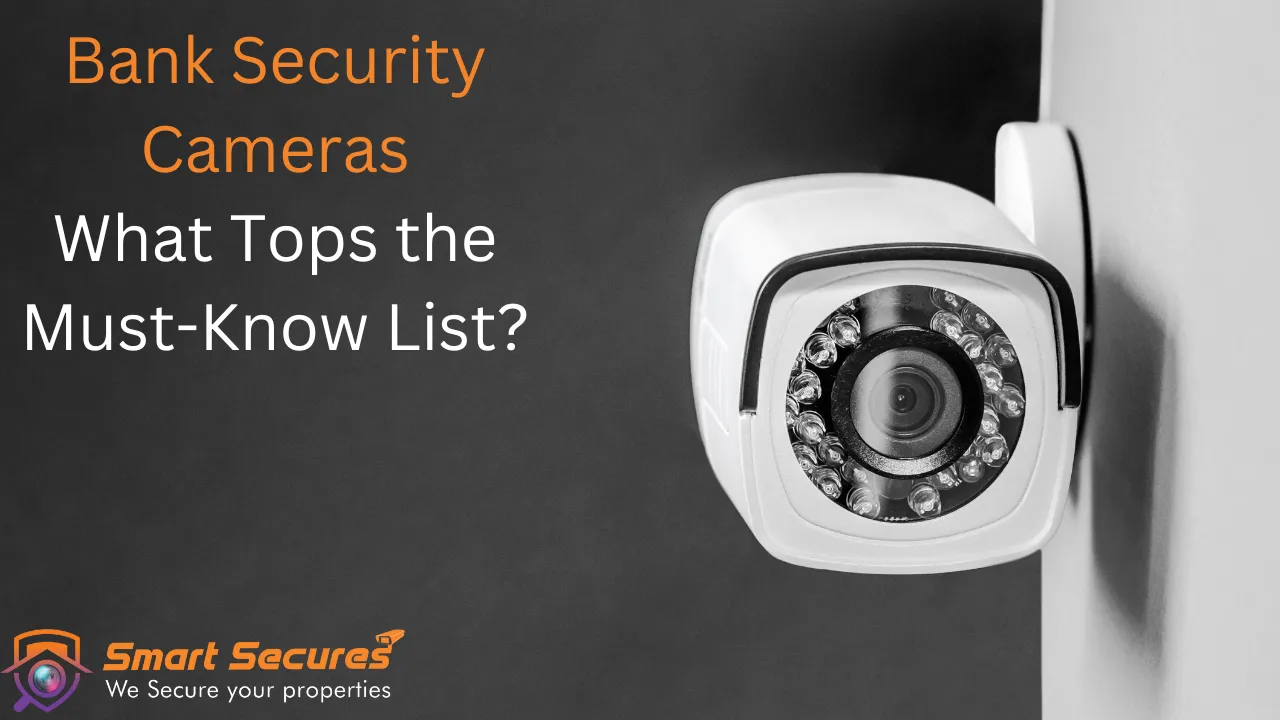Home > Blog > Bank Security Cameras: What Tops the Must-Know List?
Security is a priority for every institution, and when it comes to banks, the stakes are even higher.

Security is a priority for every institution, and when it comes to banks, the stakes are even higher. Banks deal with large sums of money, personal information, and valuable assets, making them prime targets for criminal activities. That's why bank security cameras play such a crucial role in protecting these establishments. But not all security systems are created equal, so what are the essential features of bank security cameras? Let’s take a closer look.
Bank security cameras are an essential tool for maintaining safety and security. They serve multiple purposes:
Bank security systems are not just a “nice-to-have” feature—they are a critical aspect of modern banking operations.
When considering the best security camera systems for banks, it’s important to know what features make a camera truly effective. Below are the must-know elements.
The resolution of security cameras determines how clear the images are. For banks, high-definition cameras are essential because they provide clear, detailed footage, even in low-light conditions.
Bank security cameras should be able to cover wide areas, including the entrance, ATM zones, vaults, and customer service counters. Cameras with wide-angle lenses ensure that no area is left unmonitored.
Banks are often open after dark, making low-light capabilities a must-have feature. Cameras with infrared (IR) or night vision allow for clear video capture even in low-light or completely dark environments.
Motion detection technology allows security cameras to only record when movement is detected, saving valuable storage space. It also makes it easier to focus on potential threats in real time.
One of the most important features of modern security systems is remote access. Bank security cameras should allow authorized personnel to monitor footage from anywhere at any time.
Not all security cameras are created equal, and each type has its strengths. Here's a breakdown of the most commonly used cameras in bank security systems.
Dome CCTV cameras are popular for bank security due to their discreet design and wide coverage.
Bullet CCTV cameras are ideal for monitoring entrances, parking lots, and perimeter areas.
PTZ CCTV cameras offer the flexibility to move the camera lens remotely, allowing operators to focus on specific areas or zoom in for more detail.
IP (Internet Protocol) cameras offer advanced features like high-resolution video and the ability to integrate with other devices within the bank’s security system.
For added discretion, hidden cameras can be placed in common areas to capture covert footage.
Now that we understand the types and features of security cameras, let’s discuss how to choose the right system for your bank.
Each bank has unique security requirements based on its size, location, and services offered. When selecting a security camera system, consider:
Choose a security camera system that can scale as your bank grows. A scalable system allows you to add more cameras or upgrade existing equipment without replacing the entire setup.
A bank’s security camera system should integrate seamlessly with other security measures like alarm systems, access control systems, and even biometric scanners.
While it’s tempting to opt for cheaper, lower-quality cameras, the long-term benefits of investing in high-quality systems far outweigh the initial costs.
In recent years, AI-powered cameras have revolutionized bank security. These cameras use machine learning to enhance their effectiveness by identifying unusual behavior, tracking faces, and even predicting security threats.
AI-powered cameras can instantly recognize faces, making it easier to identify known criminals or unauthorized individuals in restricted areas.
Advanced AI systems can analyze the behavior of people within the bank, such as tracking unusual movement patterns or detecting loitering.
Even the best security camera system is only as good as the team that maintains it. Regular CCTV maintenance Services ensure that your cameras are always ready to record when needed.
It’s essential to regularly inspect cameras for any damage, misalignment, or malfunctioning components. This will ensure that cameras continue to function optimally.
Security camera systems often come with software that requires periodic updates. These updates might include bug fixes, new features, or improved security protocols.
Ensure that all footage is backed up and that storage systems are regularly maintained. This includes managing cloud storage and checking the health of hard drives.
In conclusion, bank security cameras are a vital part of ensuring the safety and security of your institution. Choosing the right camera system depends on various factors, including the bank’s layout, risk level, and specific security needs. High-definition, wide-angle, motion-sensing cameras that are capable of night vision and remote access should be prioritized. Additionally, integrating artificial intelligence and regular CCTV maintenance Services will further enhance the effectiveness of your system. Ultimately, investing in top-tier security cameras can make a significant difference in protecting your bank, employees, and customers from potential threats.
Dome, bullet, and PTZ cameras are all excellent options, depending on your bank's security needs.
Ideally, they should be monitored regularly, especially in high-risk areas. However, many systems also offer remote access, allowing for efficient monitoring even off-site.
AI can enhance security by adding facial recognition, behavioral analytics, and predictive analytics, which help identify threats before they escalate.
Yes, many modern cameras are equipped with infrared or night vision technology, allowing them to record in low-light conditions.
It’s recommended to inspect and maintain the cameras regularly, ideally every 3 to 6 months, to ensure they’re functioning properly.

5,852 reviews